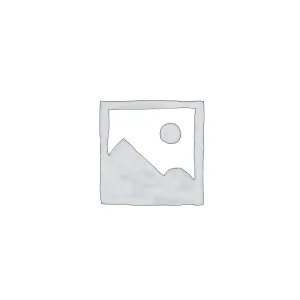The Ultimate Guide to MegaMenus
In the world of web design, navigation is paramount. A well-structured menu layout, particularly a MegaMenu, can significantly enhance a website’s usability and overall user experience. MegaMenus take traditional drop-down navigation to a whole new level, providing users with an expansive view of available options at a glance. In this guide, we’ll delve into the nuances of MegaMenus, their benefits, and best practices for implementing them effectively on your site.
What is a MegaMenu?
A MegaMenu is an advanced navigation system that displays a plethora of options in a drop-down style. Unlike the standard drop-down menu that reveals a linear list of items, a MegaMenu typically expands to reveal multiple columns and sections, showcasing various categories and subcategories. This design enables users to see a larger set of links and images without having to click through several layers of navigation, making it a functional choice for extensive websites.
For instance, an eCommerce website may wish to use a MegaMenu to categorize products systematically. Instead of burying specific product types under various unrelated headings, the MegaMenu can reveal categories like “Men’s Clothing,” “Women’s Clothing,” “Electronics,” etc., all at once, allowing users to navigate swiftly.
Why Choose a MegaMenu?
The implementation of MegaMenus can vastly improve the user experience and accessibility of a website. Let’s explore some key advantages of employing a MegaMenu in your web design:
-
Enhanced Usability: MegaMenus prevent user frustration by allowing quicker access to desired sections. Users can visually scan multiple options at once, reducing the time spent searching for specific links.
-
Better Organization: With the capacity to display various columns and sections, MegaMenus can efficiently categorize content. This organization is especially beneficial for complex websites with numerous products or services.
-
Showcase Content: MegaMenus can incorporate not just links but images and promotional banners. This feature allows sites to highlight important content and draw attention to features or sales.
-
Mobile-Friendly Design: Although traditionally associated with desktop versions, well-designed MegaMenus can be adapted for mobile use too. Creating touch-friendly collapsible sections ensures an enriching experience regardless of the device.
-
Visual Appeal: MegaMenus can visually elevate the look of a site if well-executed. Clean layouts and engaging graphics can enthrall users and encourage exploration.
Best Practices for Designing MegaMenus
While MegaMenus are beneficial, crafting one requires careful consideration. Here are some best practices for effective MegaMenu design:
1. Prioritize Content
Focus on what your users value the most. Conduct thorough research to identify which categories or links should be prominently featured in your MegaMenu. This prioritization ensures that the most sought-after content remains accessible.
2. Use Visual Hierarchies
Structuring the content in a way that illustrates the relationship among categories enhances user navigability. For example, more essential categories should be placed prominently at the top, followed by subcategories. Utilize font sizes, colors, and styling to establish a clear visual hierarchy.
3. Be Concise
While MegaMenus allow space for extensive content, it’s critical to avoid clutter. Too many options may become overwhelming. Limit the number of categories shown at once, and utilize headings for different sections for clarity.
4. Optimize for Mobile
Design your MegaMenu with mobile users in mind. Usability on touch devices may require you to create a more simplified version of the MegaMenu. Ensure that the menu’s legibility and functionality remain intact on smaller screens.
5. Test and Tweak
After implementing a MegaMenu, continuously monitor its performance. Analyze user behavior to gauge how visitors interact with the menu. Adjustments based on feedback help refine usability and can guide future design alterations.
Examples of Effective MegaMenus
Learning from examples can be immensely beneficial when designing your own MegaMenu. Let’s look at a couple of well-known websites utilizing this navigation system effectively:
Amazon
Amazon is renowned for its vast catalog, and its MegaMenu reflects this feature with finesse. The site uses a multi-column layout to showcase various product categories, allowing for quick access and discovery. The carefully thought-out organization includes icons and images, making navigating through their extensive offerings seamless.
IKEA
IKEA’s website employs a MegaMenu displaying categories effectively aligned with user needs. Shoppers can swiftly access furniture, storage, and décor options all at once. The well-organized layout, paired with distinct sections containing images, also allows easy navigation for users browsing through various stylistic inspirations.
The Future of MegaMenus
As web design continues to evolve, so do user behaviors and expectations. MegaMenus are likely to adapt alongside these changes. The trend towards personalization and customization can see MegaMenus incorporating dynamic content that learns from user preferences, displaying options catered to individual online behavior.
Moreover, accessibility will remain at the forefront of web design, with MegaMenus needing to cater to all users, including those with disabilities. Optimizing these menus for screen readers and ensuring keyboard navigation will become increasingly crucial in web design conversations.
Common Pitfalls to Avoid
While designing a MegaMenu, it’s easy to fall into a few traps that can detract from its functionality. Here are some common pitfalls you should avoid:
Overcomplexity
Having too many nested layers can confuse users, defeating the purpose of easier navigation. Make sure to keep your MegaMenu straightforward.
Ignoring Search Functionality
If users can’t find what they’re looking for in the MegaMenu, they should still have easy access to a search function. Ignoring this could lead to higher bounce rates.
Disregarding User Feedback
Once your MegaMenu is live, it’s vital to pay attention to your users’ experiences. Use analytics tools to understand any friction points in the navigation experience and be ready to adapt according to the feedback you receive.
Conclusion
In summary, MegaMenus provide an effective solution for improving navigation on complex websites. Their ability to showcase a vast array of options while enhancing usability makes them a valuable asset in web design. By understanding effective design principles, learning from examples, and proactively considering user needs, creating a MegaMenu that improves user experience is entirely achievable. As technology advances, the future holds even more potential for refining these navigation tools to cater better to evolving trends and user preferences. By leveraging MegaMenus, you can ensure your site remains user-friendly and attractive, ultimately driving more engagement and improving overall satisfaction.
MegaMenu: Download for Free on OrangoGPL
That’s right, downloading MegaMenu Plugins for free is viable and 100% within the law.
Moreover, even downloading a cracked MegaMenu is law-abiding, as the license it is distributed under is the General Public License, and this license allows its free distribution.
Hence, there’s no need to worry: If you were looking to buy MegaMenu cheaply or, directly, to download MegaMenu Plugins nulled and, this way, get it one hundred percent free, now, you can do that without going outside the law.
Download MegaMenu GPL: The only solution for entrepreneurs beginning their journey
The name you give it doesn’t matter: Discounts for MegaMenu, download MegaMenu Plugins GPL, download MegaMenu without license or download MegaMenu nulled.
It is something completely legitimate and a necessity for any entrepreneur starting out.


-300x300.webp)






Reviews
There are no reviews yet.